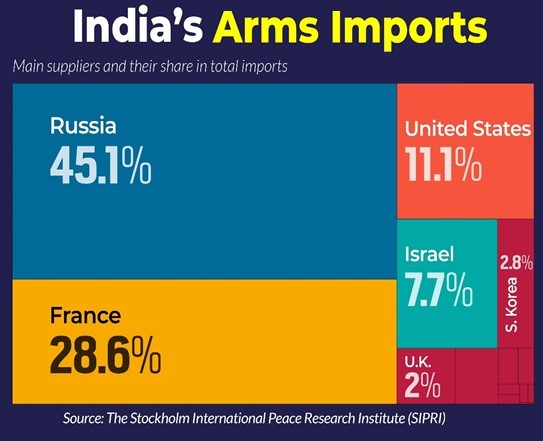The US-India military deal is not enough to cut the partnership that India has with Russia.
The US remained the top arms exporter during 2018-22.

|
Agreement |
About |
Signed in |
|
GSOMIA |
General Security Of Military Information Agreement |
2002 |
|
LEMOA |
Logistics Exchange Agreement |
2016 |
|
COMCASA |
Communications Security Agreement |
2018 |
|
BECA |
Basics Exchange Cooperation Agreement |
2020 |
|
Issues in Import from Russia |
Issues in Import from USA |
|
Russia-Ukraine War- It disrupted military supplies to India and will also delay remaining two of the five Russian S-400 air defence systems bought by India in 2018. |
US relation with Pakistan- Due to the strategic threat to India from Pakistan, this may weaken India’s defence ties with USA. |
|
Payments - Due to sanctions against Russia over war, payment to the defence procurement by India is still a challenging issue. |
Technology transfer- US is not open to India with the technology transfer related to defence which is a major hurdle. |
|
Russia -China ties- Russia’s inclusion in the China’s One Belt One Road initiative and its closer proximity to China affects the strategic autonomy of India. |
India-Russia Defence ties- India’s purchase of S-400 from Russia weakens the defence partnership with USA.
|
References